Among Japanese sweets, you may often hear of mochi, dorayaki, etc. However, today we would like to introduce a sweet that has a strong impression as an offering. The interesting fact is that many people have seen it but do not know its taste and features. Therefore, let’s find out in this article surprising facts about this sweet and how to make it.
What is Rakugan?
Definition of Rakugan
Rakugan is a type of Japanese confectionery made from glutinous rice flour called mijinko, cereal flour, sugar and mizuame. It also has the name Uchimono or Uchigashi because of it producing method. With all the ingredients pressed into a mold, they will be hardened and then dried to make a beautiful one.
This dish is a traditional Japanese confectionery that often appears as sweets and offerings in tea ceremony. However, it is believed to not originate in Japan. In the next section, let’s find out more about its history and etymology.
Mizuame (水あめ, literally “water candy”) is a sweetener from Japan. Mizuame is a main ingredient in Japanese sweets (wagashi).
Difference between rakugan and other sweets
Rakugan vs Hakusetsuko
Hakusetstuko is a type of rakugan made by adding white sugar and lotus seed powder to non-glutinous rice and glutinous rice powder, putting it in a mold and drying it. When you put it in your mouth, it is moist and melts like light snow, so it came to be called that. In some areas, there is no distinction between Hakusetsuko and rakugan, and they are all called rakugan.
Rakugan vs Higashi/ Wasanbon
Higashi (干菓子) are traditional dry Japanese sweets consisting of sugar and rice flour. They have a very long shelf life as the moisture content is just about 20% or less. There are three types of wagashi: fresh, semi-fresh and dry. Higashi (or dry sweets) includes rakugan, wasanbon and yatsuhashi.
Wasanbon (和三盆), which is known as a sweet similar to rakugan, is also made with the same technique. However, Wasanbon does not use flour or mizuame.
History & Etymology
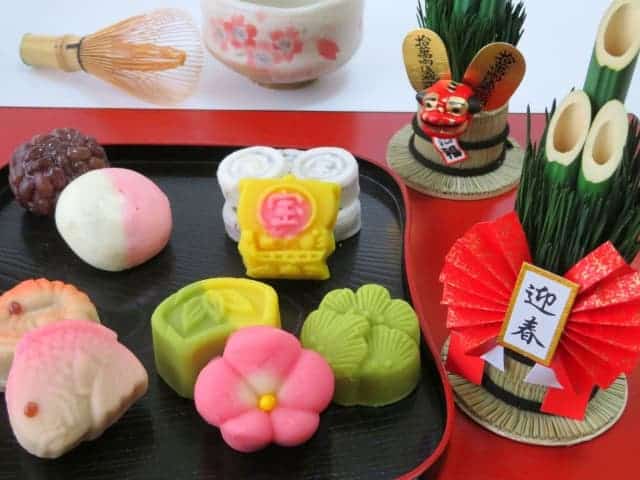
Etymology
There are several origins of this name. One theory is based on a sweet called “Nanrakukan” , a Chinese confectionery which was brought to Japan during the Ming Dynasty (14-17th century). Narachikan is a sweet made by adding sugar and mizuame to finely ground glutinous rice and putting it in a mold. It is considered to be the root of rakugan because the manufacturing method is similar. A lot of people believe that from the name “Nanrakukan” , it gradually changes to “Rakukan” and then “Rakugan” (落雁) as we all know it today.
Another theory is that after the scene of “Katata no Rakugan” (刀の落雁) in Omi Hakkei (Eight Views of Omi). At that time, the shape of Higashi was believed to resemble the view of wild geese flying down from the sky so it was named “Rakugan” (落雁).
The Eight Views of Omiare traditional scenic views of Omi Province, which is now Shiga Prefecture in Japan. They were inspired by the Eight Views of Xiaoxiang in China which were first painted in the 11th century and then brought to Japan as a popular theme in the 15th centuries.
Sources: Wikipedia
History
Several theories attempt to explain how rakugan, originally associated with tea ceremony culture, became a traditional Buddhist offering. The sugar in rakugan, particularly white sugar, was regarded as an expensive luxury item during earlier periods. White also holds special significance as the color of burial garments worn in Buddhist funeral rites.
One explanation suggests that people selected white rakugan because they wished to present precious items to the deceased while honoring the color white, which evoked the pure, unstained quality of “shiroshozoku” (white burial clothing). This dual symbolism made rakugan particularly appropriate for memorial offerings.
Another theory traces rakugan’s religious use back to the Buddhist monk Mokuren and the practice of “Hyakumi no Onjiki” (the offering of a hundred flavors). According to Buddhist tradition, Mokuren performed a ritual called “Hyakumi shokugan” to rescue his mother from the Realm of Hungry Ghosts (Gakido), where she suffered. The ritual involved offering foods of exceptional taste and sweetness. Given its delightful flavor profile, especially its sweetness, rakugan became one of the foods offered during these Hyakumi shoku ceremonies, eventually establishing its place in Buddhist memorial practices.
How to make delicious Rakugan?

Ingredients
| Ingredients (for 10 pieces) | Measurement |
|---|---|
| Wasanbon sugar | 40g |
| Nekimizu | 2g |
| Kanbai powder | 5g |
How to make Rakugan?
Put the wasanon sugar and nekimizu in a bowl and mix.
Remember that the amount of neki (starch syrup) and water is equal.
When the mixture beomes hard enough, add the kanbai powder and continue to mix.
After mixing, sieve it and put it into a mold and wait until the mixture dries. You can choose the mold of flowever or anything as you like.
After hardening, take it out of the mold. The sweet is ready to serve!
How to arrange Rakugan?
As an offering, rakugan is really beautiful but some people may not know how to arrange it. Therefore, in this section, we would like to introduce some ways of eating this traditional confectionery.
Add rakugan into drinks
There is a popular way of putting rakugan into drinks instead of eating straight. You can put it into drinks like coffee, Teavana tea, etc too add more sweet taste. Sometimes, you can also see crushed rakugan added into yogurt as a dish for children.
You can also put rakugan into soup too. Therefore, how about trying this way of arrangement for your New Year’s dish with family and friends?
Use as toast toppings
If you are getting bored of eating bread with jam, how about trying this new Japanese-style toast?
First, spread margarine or butter on the toast. Then sprinkle powdered rakugan on top. That’s it! With just two simple steps, you can enjoy the new mouth-watering toast with rakugan.
Use as toppings for Japanese food
If you make Japanese simmered dishes at home, you can try add some rakugan on top as toppings. It is simple but really delicious way of eating it.
Find some drinks that go well with rakugan
This time, let not put it into the drink but instead, eat rakugan and drink to balance the sweet taste. As stated previously, rakugan is often used in tea ceremony so tea definitely goes really well with this sweet. You can choose your favourite type of tea, but if you want it to be authentic, you can drink Japanese tea like sencha, hojicha. Other than tea, another suitable drink is coffee. Next time, let’s find yourself a favourite drink to enjoy with rakugan!
Restaurants/ Stores
Rakugan Moroeya

This is a Japanese sweets shop founded in 1849 in Kanazawa, Ishikawa Prefecture. They have a variety of sweets, mainly traditional sweets and rakugan. If you are finding a place to buy offerings for obon, do not forget to visit this place. Other from offline stores, you can also visit their website to order online. Check below for detailed information.
Kamakura Toshimaya

This is the famous brand that is famous for its “Pigeon Sable” (鳩サブレ). Toshimaya (豊島屋) based in Kanagawa prefecture has long been famous for Hato Sable, the pigeon shaped cookie. The main branch of Toshimaya is located in Kamakura. Other than hato sable, Kamakura Toshimaya also offers a lot of beautiful and delicious Japanese sweets, including rakugan. Therefore, if you are a fan of wagashi, remember to give this store a try!
Baikodo

Baikodo is a long-established Japanese sweets store that has been love since its open. The rakugan here in baikodo has adorable designs in the shape of seasons. Moreover, the traditional handmade method of wasanbon sugar is also the reason for its popularity. When you taste the wasanbon sugar, you will immediately feel the “snow-like melt-in-your-mouth” feeling. This is not only a place to buy beautiful gifts but also a trustworthy place for you to buy cooking ingredients.
Takeaway
Rakugan is not the most famous Japanese confectionery all over the world. However, it has an important meaning as a wagashi. Even after being used as offering, it still can be eaten deliciously depending on the arrangement. As a dry sweet, it is a great idea to enjoy it with some drinks such as tea. In recent years, there are more and more fashionable and easy-to-eat rakugan. You can buy it as a gift for family and friends or just buy it for yourself to enjoy. Let’t find your favourite rakugan!
If you are a fan of Japanese sweets, click here for more information.
Rakugan (Japanese Dry Sweets) FAQ
What is Rakugan?
It is a traditional Japanese dry sweet made by pressing rice flour and sugar into wooden molds.
What does it taste like?
It tastes elegant and intensely sweet, often highlighting the refined flavor of Wasanbon sugar.
What is the texture like?
It feels hard and dry at first but slowly dissolves into a powdery sweetness on your tongue.
Do they bake it?
No. Artisans compress the powder mixture tightly into molds and dry it without baking.
When do Japanese eat it?
Hosts serve it during tea ceremonies, and families offer it to ancestors on Buddhist altars.
Why are the shapes so beautiful?
Craftsmen mold them to reflect the four seasons, such as cherry blossoms in spring or maple leaves in autumn.
Is it vegan?
Yes. Traditional recipes use only plant-based ingredients like rice flour, sugar, and starch.
How long does it last?
Since it contains very little moisture, it keeps for weeks or even months at room temperature.
What drink pairs well with it?
The intense sweetness pairs perfectly with the bitterness of Matcha green tea.
Where is it famous?
Kanazawa City, Kyoto, and Matsue are famous for producing high-quality Rakugan.
What does the name mean?
“Rakugan” means “falling wild geese,” comparing the texture to geese descending upon a sandbar.
Is it gluten-free?
Usually, yes. Makers typically use glutinous rice flour, but some may add wheat starch, so you should check.
Can I buy it as a souvenir?
Yes. It is sturdy, lightweight, and beautiful, making it an excellent gift for travelers.
What are the main ingredients of Rakugan?
Two main ingredients are sugar and rice flour.
Detailed producing method is below here. Do not forget to check it out!
Is Rakugan a type of Higashi?
Yes! Rakugan is a type of dry sweets, which contain less than 10% of moisture. Other than rakugan, Higashi also consists of GoshikiitÅ, Hakusansekkei, Suiko, etc
How do I eat it?
You can bite it, but it is better to break off a small piece and let it melt in your mouth.
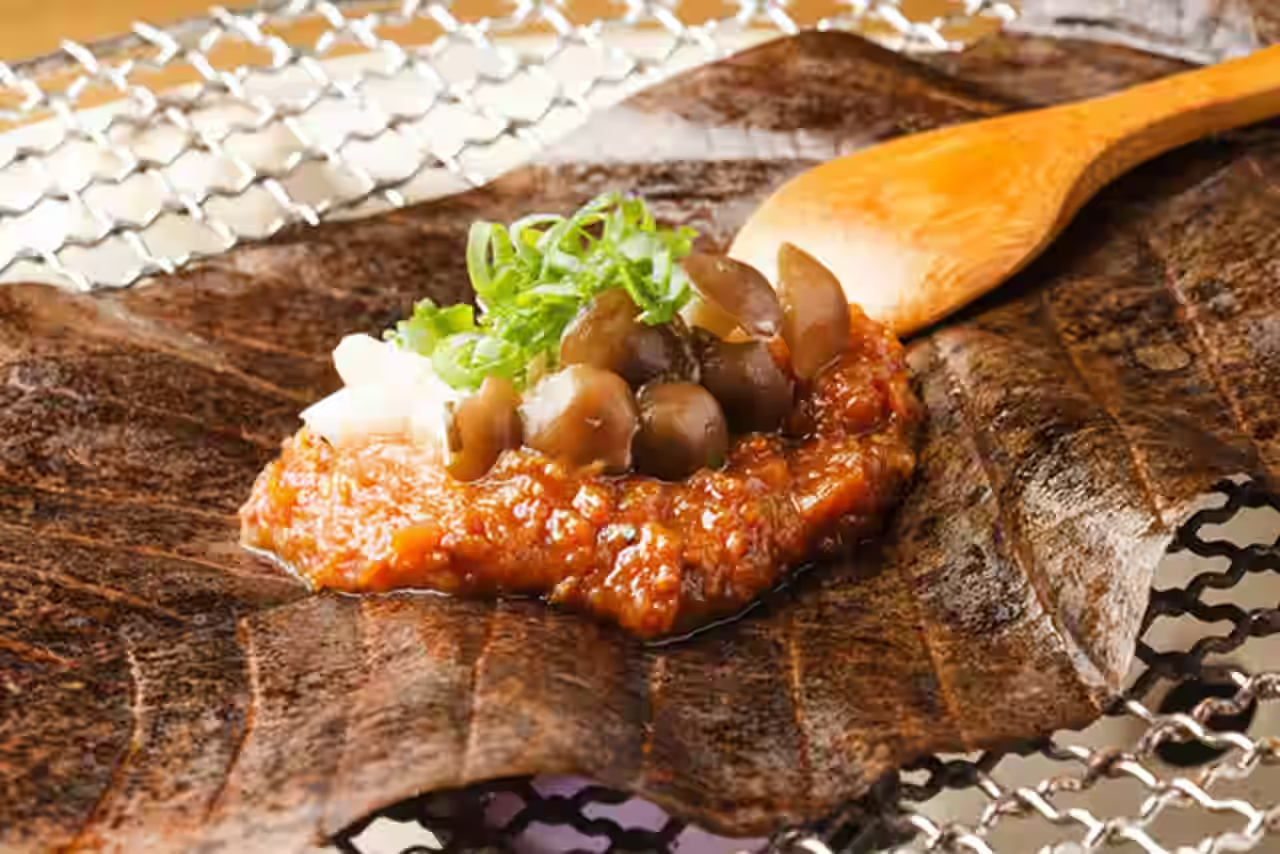






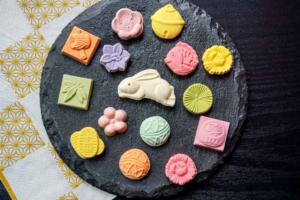

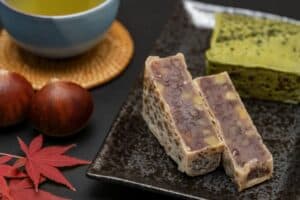




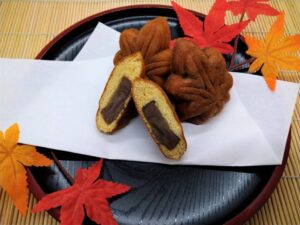

Comments